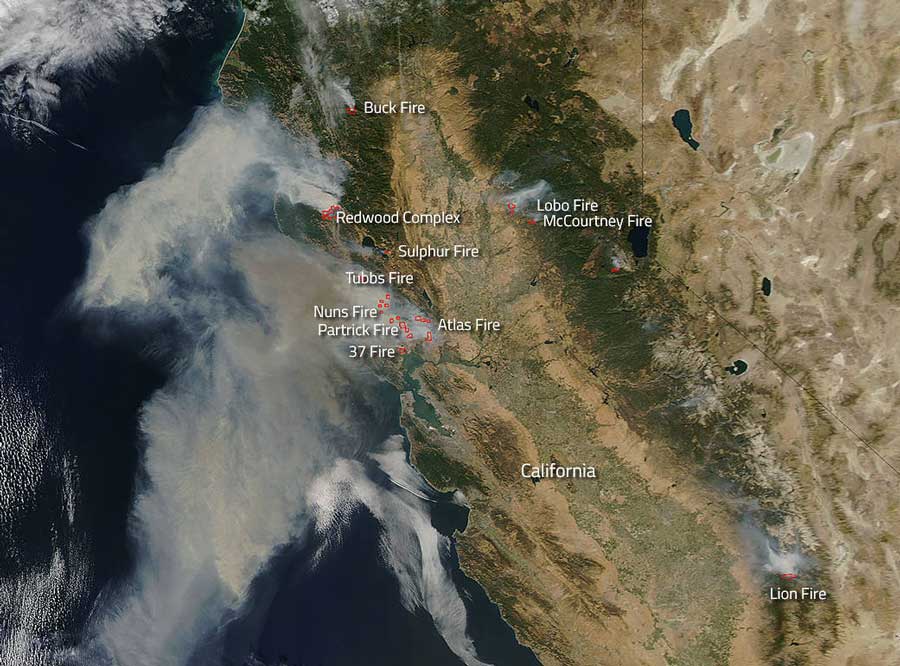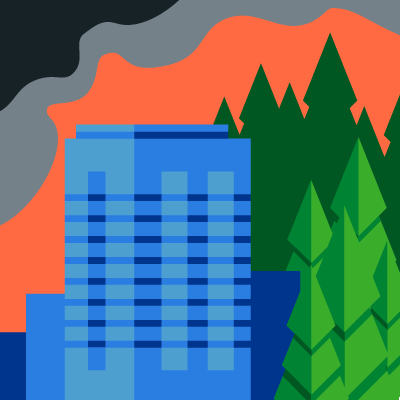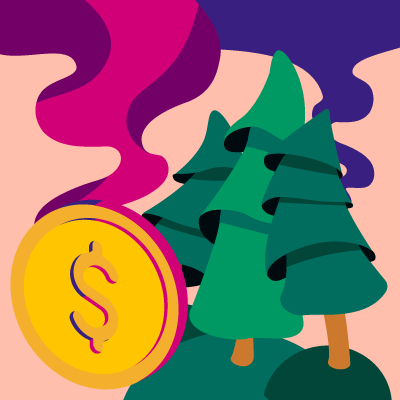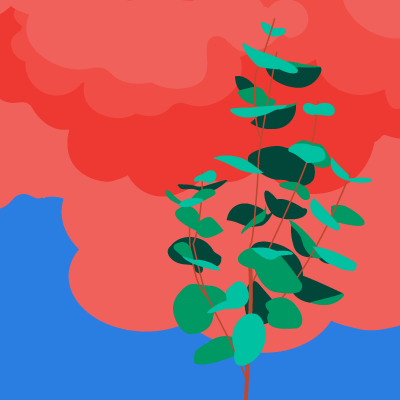Fire-making is one of the most important discoveries of humankind, but what happens when blazes roar out of control? Homes and business are destroyed, communities are uprooted, and lives are tragically lost. Firefighters rightly prioritize saving lives over fighting flames and the blazes continue to spread.
The western United States, and California in particular, have already suffered a grueling wildfire season this year, with just over a month to go. What caused the fires is still being debated, but once the sparks were ignited, what were the major contributors to the ongoing destruction?

Topography
High-pressure winds originating in the Great Basin regions of Nevada and Utah are oftentimes pushed toward the California coast. The winds move quickly, picking up speed through low-pressure areas and mountain passes, which act to funnel them. While there may be a brief respite from these “Diablo Winds” on a hot day, the gusts pick up during the cooler evenings, spreading fires and posing a risk to neighborhoods as residents sleep—making evacuation more challenging. Climate change may also play a role, causing the originating gusts to be even warmer and less humid and thus rendering the air hotter and drier as it enters California’s climate. Topography propagates wildfire effects after ignition, allowing flames to rapidly travel downhill through forests and nearby developments.1
Climate
Following a five-year drought, California experienced its second-wettest winter on record in late 2016 and early 2017.2 What followed was explosive vegetative growth, even prompting a magnificent March 2017 “superbloom” in southeastern desert areas.3
A wet winter segued into a steamy summer—California’s hottest on record—drying the new plants into brittle brush. Subject to the same heat and drought, as well as an invasive pine beetle infestation, approximately 66 million trees have died across the 1.3 million-acre Sierra Nevada forests since 2010.4 This bounty of dried-out vegetation provided a perfect conductor for recent wildfires.
The Human Element
Capitalizing on a growing interest in the serenity and privacy of forest regions, developers have built subdivisions in and around Wildland-Urban Interface (WUI) areas, exposing these properties and their inhabitants to increased wildfire risk.5 As fires start to burn in less-populated areas, strong winds blow embers beyond the reach of the flames. Homes in the WUI may not ignite directly but suffer from this ember intrusion due to ample fuel sources in populated areas. Homes in the WUI also bring with them the need for power lines, which are easily downed by strong winds, producing sparks that add to the fire risk.
Next Steps
After the 2017 wildfire season ends and blazes reach 100% containment, Californians will continue to face major challenges. People are facing health risks from tiny, noxious particles suspended in the atmosphere. Smoke contains dangerous chemicals that can be inhaled even when wearing a standard face mask. Those digging through devastated neighborhoods without proper protection risk inhaling these particles and suffering from subsequent respiratory problems.
The risks aren’t contained to California: NOAA-NASA’s Suomi NPP satellite also uncovered West Coast smoke traveling along the jet stream and arriving 3,000 miles away on the East Coast, affecting nationwide air quality.6 All eyes will turn to researchers, scientists, and government agencies to determine how best to protect the affected population in California and high-risk areas worldwide from the seemingly increasing risk of wildfire-induced devastation.
1 California Winds Are Fueling Fires. It May Be Getting Worse.
2 The Deadliest Fires in California History Aren’t Over Yet
3 A superbloom of wildflowers overtakes California's southeastern deserts in March 2017
4 Forest Service Survey Finds Record 66 Million Dead Trees in Southern Sierra Nevada
5 The Deadliest Fires in California History Aren’t Over Yet
6 Wildfire Smoke Crosses U.S. On Jet Stream



